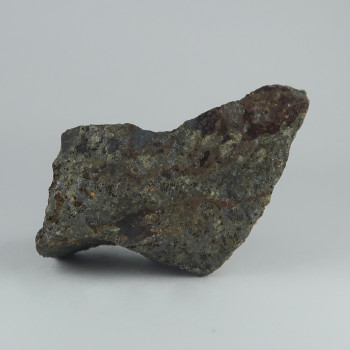Pyrrhotite
Pyrrhotite is a magnetic iron sulphide mineral with a metallic luster and typically appears in brassy yellow to bronze or brownish-yellow colours.
Showing the single result
Information about Pyrrhotite
Pyrrhotite is a magnetic iron sulphide mineral with a metallic luster and typically appears in brassy yellow to bronze or brownish-yellow colours, though it can also be darker brown or reddish.
The mineral is commonly found in tabular, prismatic, or granular crystals, often with irregular forms or in massive aggregates. Its surface can show iridescent tarnish or a silvery sheen.
Pyrrhotite’s notable magnetic properties make it stand out from other minerals, as it is weakly magnetic, which is unusual for a sulphide mineral.
Uses and History
Pyrrhotite is primarily valued for its iron content and can be an important ore of iron in some regions.
However, it is not often used directly due to its magnetic properties and tendency to cause processing difficulties. It can sometimes be used in the production of sulfuric acid as a byproduct of sulfur mining.
Pyrrhotite was named after the greek word ‘pyrrhos’, meaning ‘flame coloured’ – a reference to its bronzy red colouration.
Mineralogy
Bronze, dark brown, brown red
Hazards and Warnings
Contains sulphur. While it is not typically especially hazardous, under certain storage circumstances it could produce small amounts of sulphuric acid.
Mineral collectors should wash their hands after handling specimens, to avoid any exposure to potential toxins.
Almost all rocks, minerals (and, frankly, almost all other substances on earth) can produce toxic dust when cutting, which can cause serious respiratory conditions including silicosis.
When cutting or polishing rocks, minerals, shells, etc, all work should be done wet to minimise the dust, and a suitable respirator or extraction system should be used.
Translations
Arabic:
Hindi:
Portuguese:
- Pirrotite
Bengali:
Indonesian:
Punjabi:
English:
Italian:
- Pirrotite
Russian:
- Пирротин
French:
Japanese:
- 磁硫鉄鉱
Spanish:
- Pyrrhotin
German:
- Pyrrhotin
Korean:
Thai:
Gujurati:
Mandarin Chinese:
- 磁黄铁矿
Urdu:

